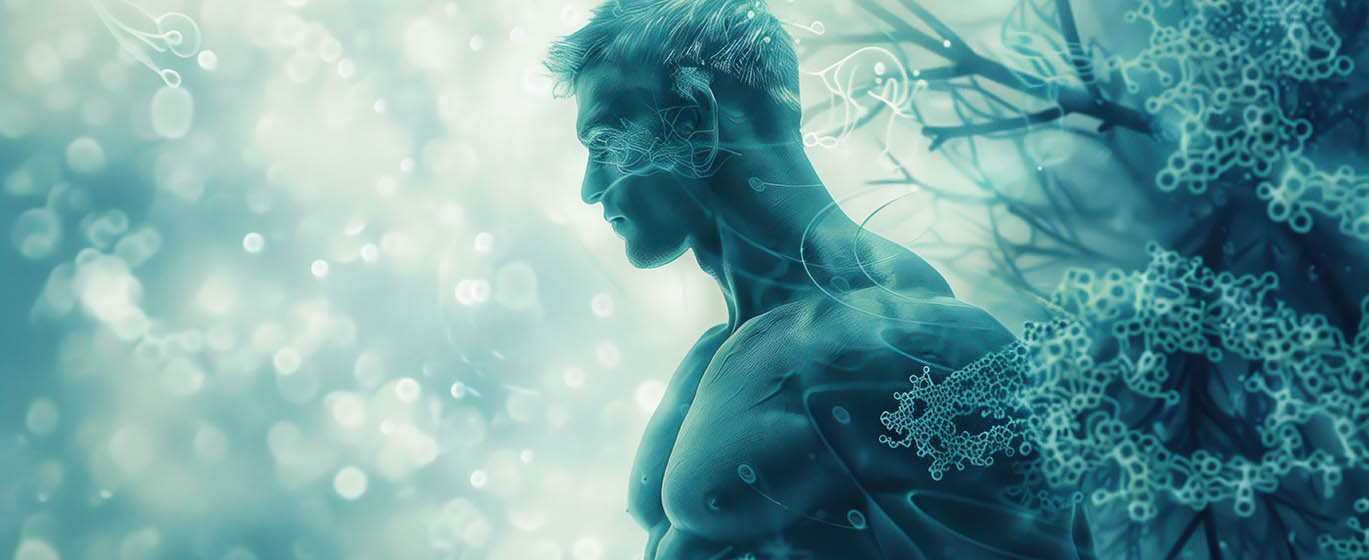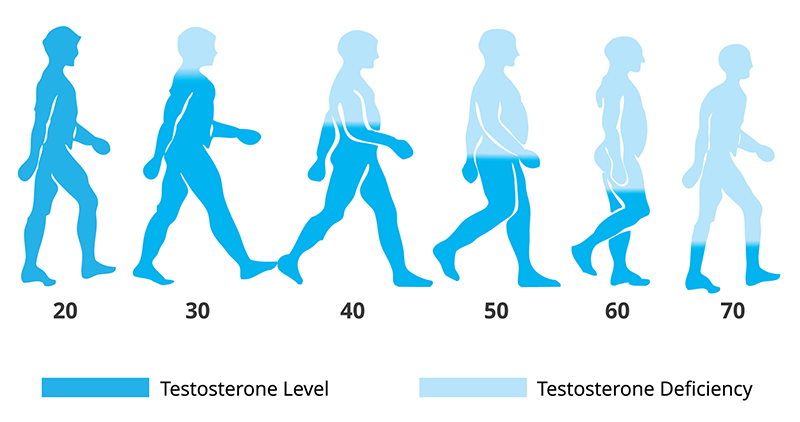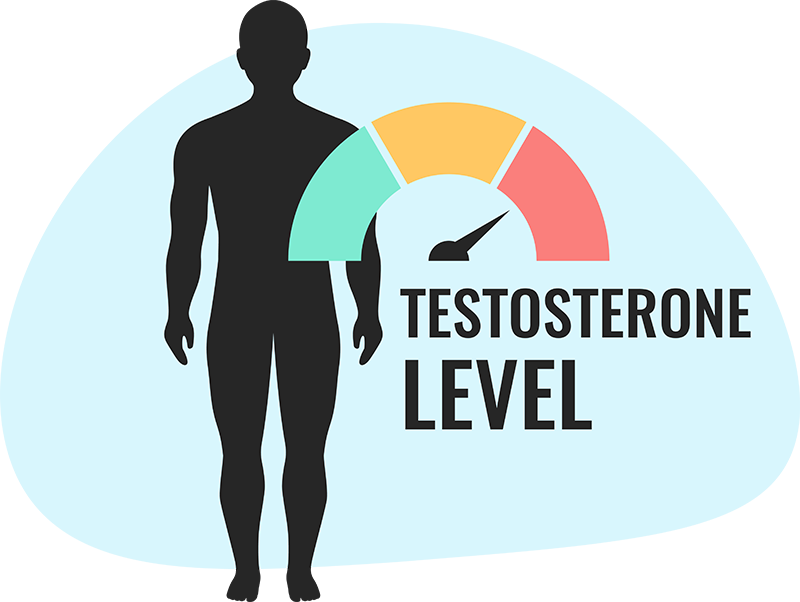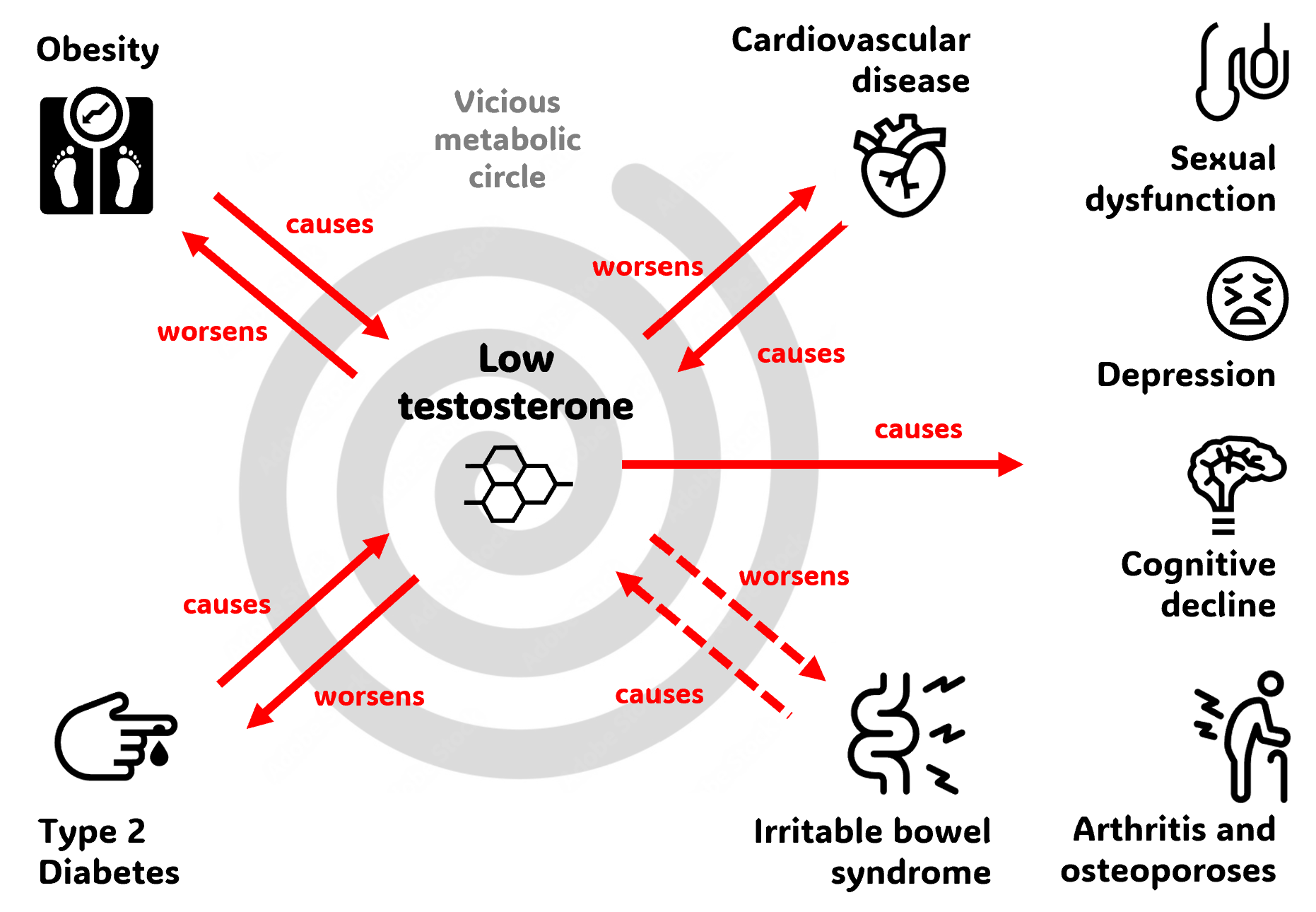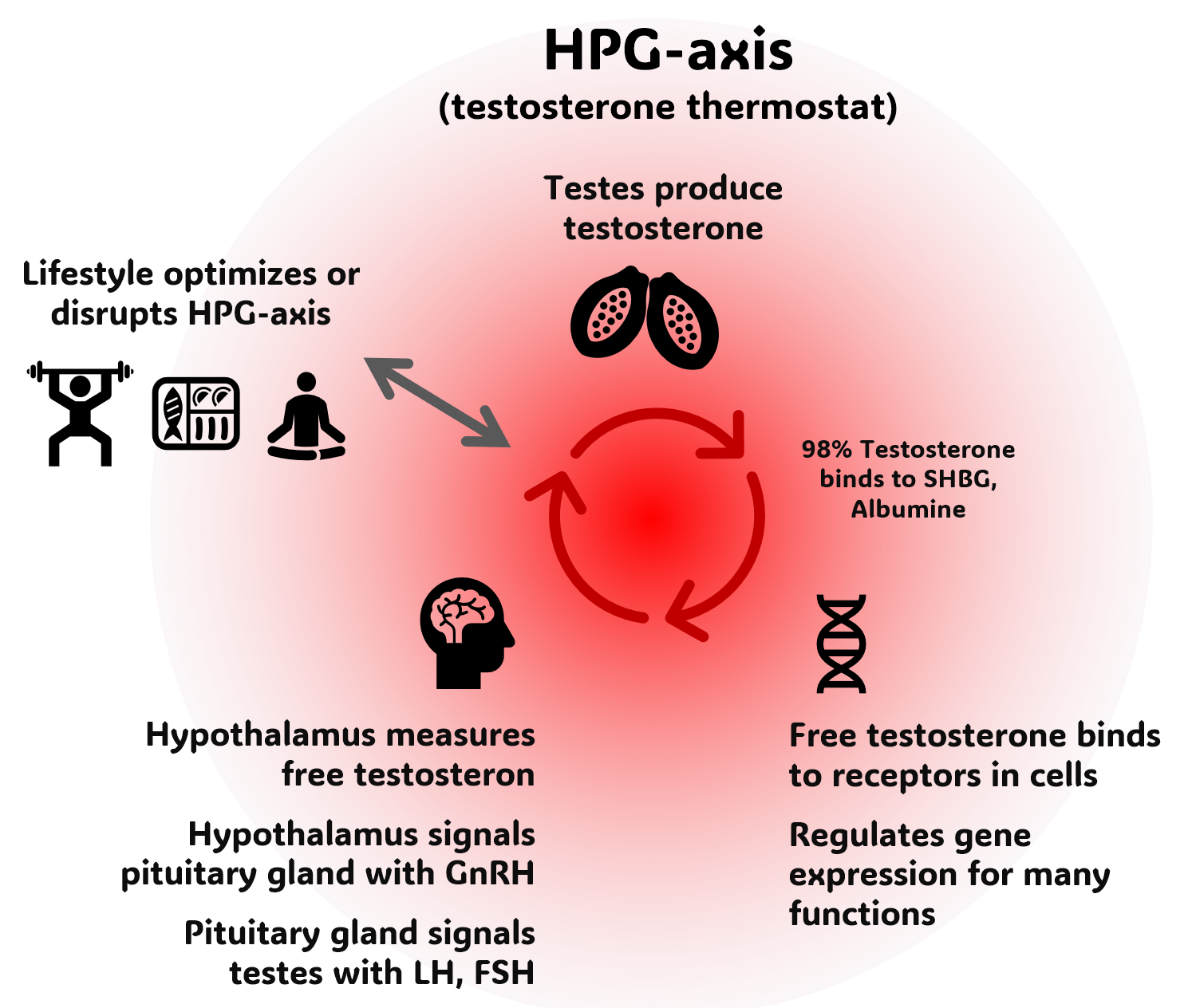Testosterone 101
The hormonal thermostat of the body is called the HPG axis. The brain senses
testosterone levels and releases signaling hormones in the bloodstream, which signal the
testicles to adjust testosterone production. Stress, energy balance, sleep, and
nutrition all feed back into the brain, allowing this loop to match hormone output to
demand. Both psychological and physiological factors shape HPG signaling—and are also
influenced by it—creating a two‑way dynamic.
Testosterone is made in the testes from DHEA, which comes from pregnenolone made by our
cells that need cholesterol for this process. Both testosterone (anabolic) and cortisol
(catabolic, stress!) compete for this resource.
Most testosterone circulating in the blood is bound to proteins, while a small free
fraction enters cells to regulate gene expression. This supports muscle and bone growth,
increases red blood cell production, enhances libido and fertility, and influences mood
and motivation.
When the HPG axis begins to falter—whether due to impaired brain signaling or reduced
testicular function—symptoms start emerging. This condition is known as hypogonadism.
Primary hypogonadism when the testicles fail to produce and secundary if the brain
signaling fails. When the decline is age-related and irreversible, the condition is
known as andropause. A third form, functional hypogonadism, stems from an unhealthy
lifestyle. This type is often reversible by following the 10 core principles. Otherwise
TRT microdosing is needed.
